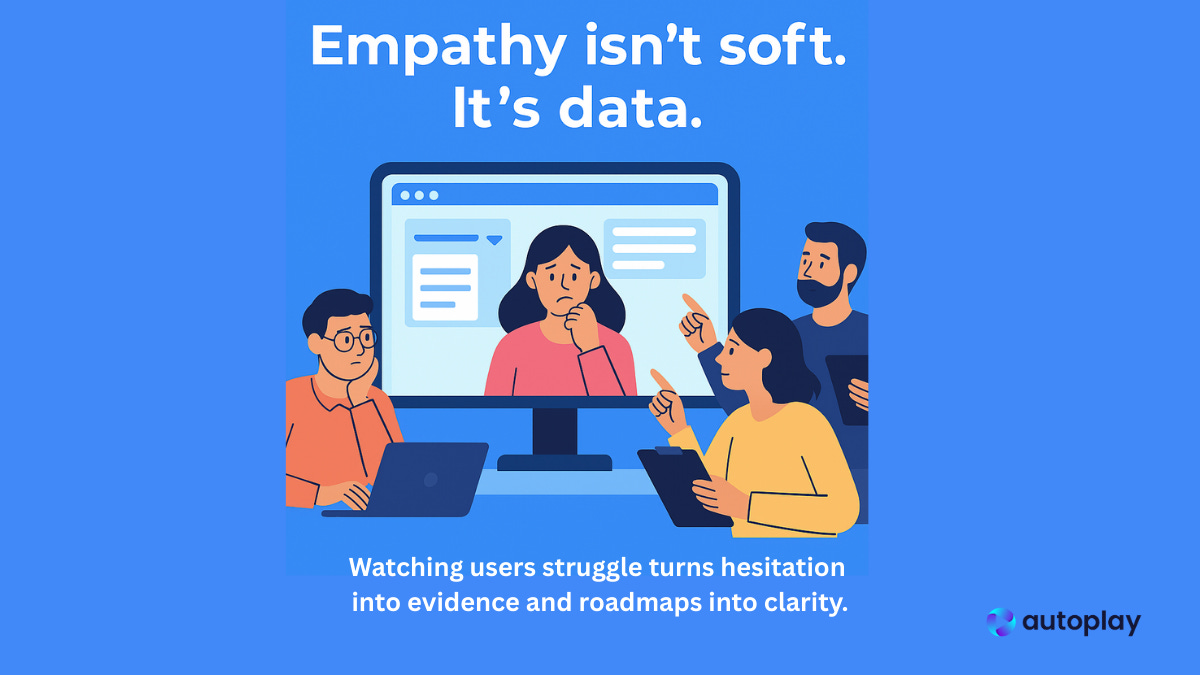Scaling Empathy: Turning Replays Into Product Insight
Because compassion is empathy at scale.
UX research often reveals the same moment: a user hesitates, stalls, or abandons a flow that seemed obvious in design.
It is frustrating. It is disappointing. But it is also one of the most powerful ways to understand user behaviour.
Why Struggle Is Insight, Not Failure
Analytics tell you what happened. Watching users shows you the cognitive friction, the gap between a user’s mental model and the interface you designed.
Psychologists call this a mismatch of affordances: the system suggests one path, but the user interprets another. The resulting hesitation is where design either guides or breaks.
Some of the most revealing signals only come from observation. A long pause shows cognitive load is too high. A repeated hover over an unclear icon reveals uncertainty. An abrupt abandonment after too many failed attempts signals decision fatigue. None of these appear in a dashboard, but all of them shape the experience.
Empathy Backed by Evidence
Watching users struggle is not about sympathy. It is about grounding design in human behaviour.
Designers stop obsessing over aesthetics and start asking how to remove friction.
Researchers gain qualitative context to support quantitative data.
PMs see how one extra step can derail trust.
Engineers learn that error states shape perception as much as reliability.
When teams share these moments, empathy becomes evidence.
The Psychology Behind Struggle
Certain principles show up again and again in these moments.
Hick’s Law: the more options you present, the longer it takes to decide.
Jakob’s Law: users expect your design to work like the ones they already know.
Cognitive Load Theory: working memory is limited, and every extra step drains it.
Struggle is where these laws collide with design choices.
How Autoplay Scales Empathy
Empathy through the lens of a UX researcher means seeing the product through your user’s eyes and feeling what they feel when things don’t work. In UX, session replays create that emotional empathy, the frustration you feel when you see users hesitate or struggle. But empathy only matters when it drives action.
Autoplay helps turn that emotion into compassionate action. By pairing replays with hypothesis testing, it lets teams validate assumptions in minutes, spot recurring friction, and translate struggle into clear design priorities. Emotional empathy sparks the will to act, and Autoplay makes acting at scale possible.
Why This Matters
Empathy shifts perspective, but compassion drives action. Struggle is the signal that turns feeling into focus, and focus into better design.


